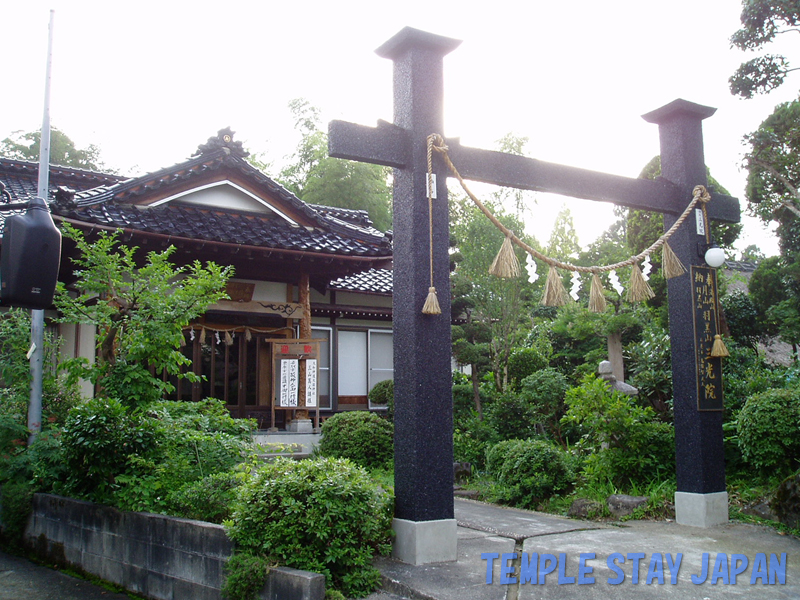Yamagata– category –
-

Dainichibo temple stay (Yamagata)
It is located inside Mount Yudono, at the end of a long drive up a mountain road. It is a sacred place for ancient mountain worship and is famous for its mummified monks.The blanket had the Heart Sutra written on it. Thanks to that, I was able to sleep soundly at night. -

Miyatabo shrine stay (Yamagata)
This is a shrine stay with a history of about 150 years. A goma (fire) prayer ceremony is held in the morning. Meals are shojin vegetarian cuisine. There is a hot spring bath available 24 hours a day. -

Tamonkan shrine stay (Yamagata)
This is a shrine stay with a history of about 300 years. You can stay in a building that is about 100 years old. Dinner are prepared using seasonal local ingredients. The bath is an artificial mineral spring and is available 24 hours a day. -

Omonoimi-jinja shrine stay (Yamagata)
This shrine is located on Mount Chokai, one of the 100 famous mountains in Japan. There is a shrine lodging facility built for climbers. -

Kanbayashi-Katsukane shrine stay (Yamagata)
This shukubo is located right next to the entrance of the approach to Mount Haguro, so enjoys the best location among the temple lodgings on Mount Haguro. The building is a stately private house with a thatched roof. I was welcomed warmly in the home-like atmosphere. -

Ikutabo shrine stay (Yamagata)
Ikutabo is a shukubo run by the son of the Shinto priest and his kind mother. It is more like a private inn. As it is located closer to the starting point for a climb than many other shukubo lodgings lining up along the street, it is convenient for worshiping. -

Daishinbo shrine stay (Yamagata)
In the garden, there are a haiku monument of Basho Matsuo that is said to be the largest in the Tohoku district and Seikanzeon Bosatsu, an image of Buddha that is also considered to be a figure of the god of Mount Haguro at the period when Buddhism and Shintoism were mixed. -

Miyashitabo shrine stay (Yamagata)
Despite its nice, inn-like appearance, it has a large shrine inside. Here they perform ritual prayers called Gomakito from 5:30 in the morning. The food they serve is traditional shojin (vegetarian) cuisine rich in local produce. In Shinto, "meals" are called "naorai," which means "get-together between men and gods." -

Sankoin shrine stay (Yamagata)
This shukubo is located within walking distance from the entrance of the approach to Mount Haguro. The building looks like a private inn but it is strictly a shrine building. There was a tengu (a legendary long-nosed creature) face mask on a wall, which made me feel the world of Shugendo. -

Mount Haguro Saikan shrine stay (Yamagata)
This shukubo is located alongside the approach near the mountain top of Mount Haguro. It was originally called Kezouin, but was rebuilt in 1697. I was really happy to be able to stay at Saikan, which is located just beside the promenade. As old as it was, the building was well maintained with a beautiful garden.
12









